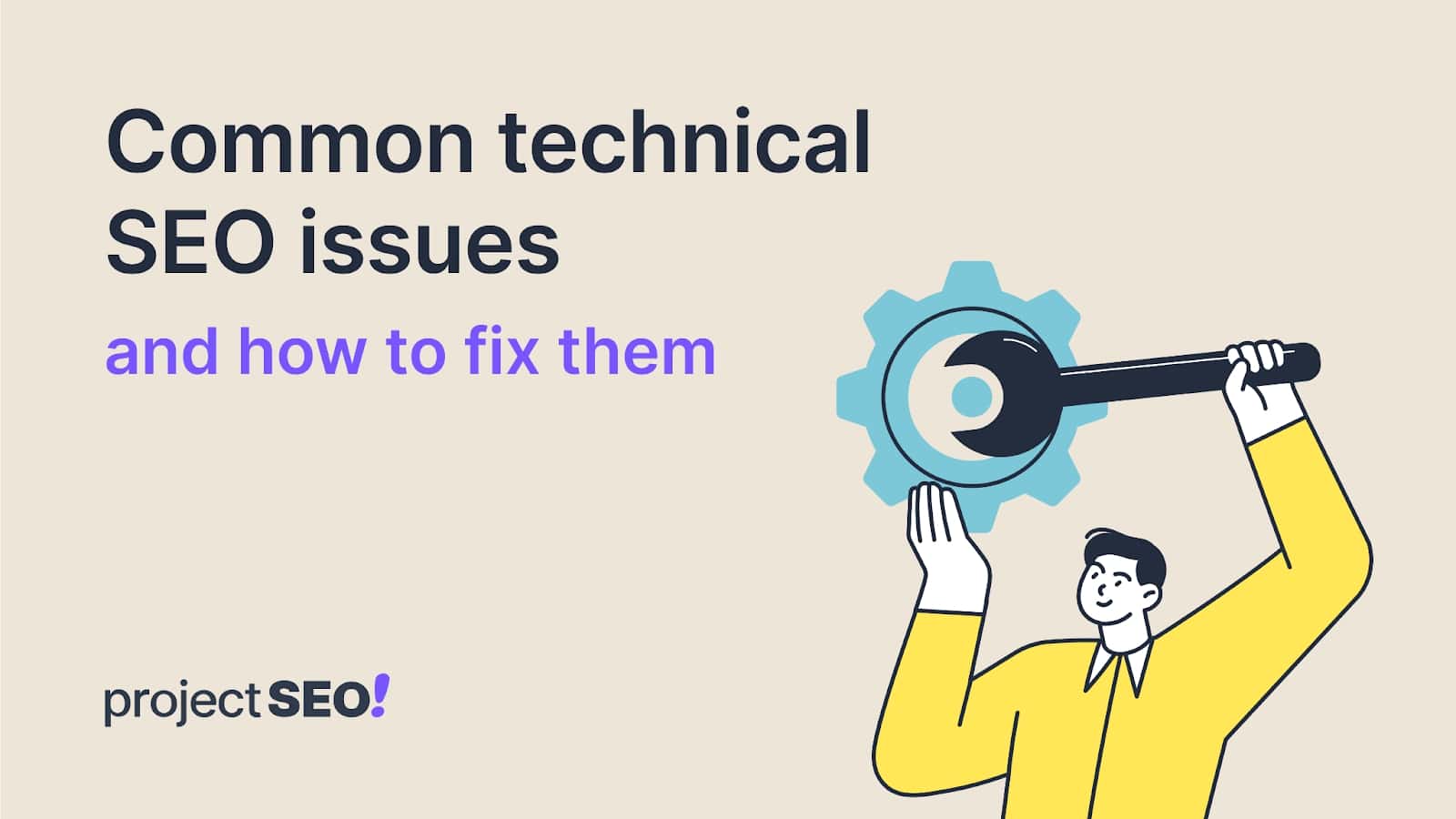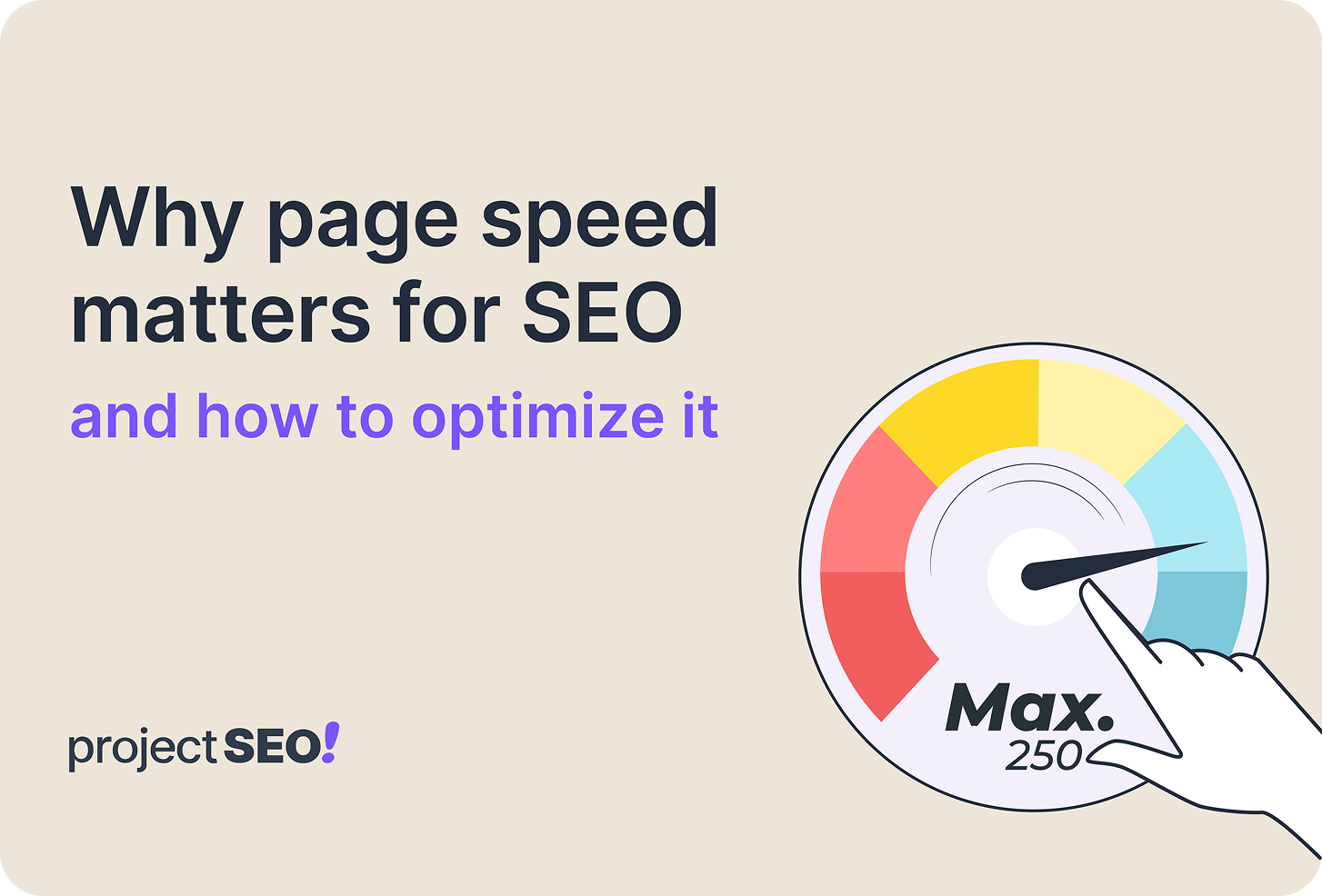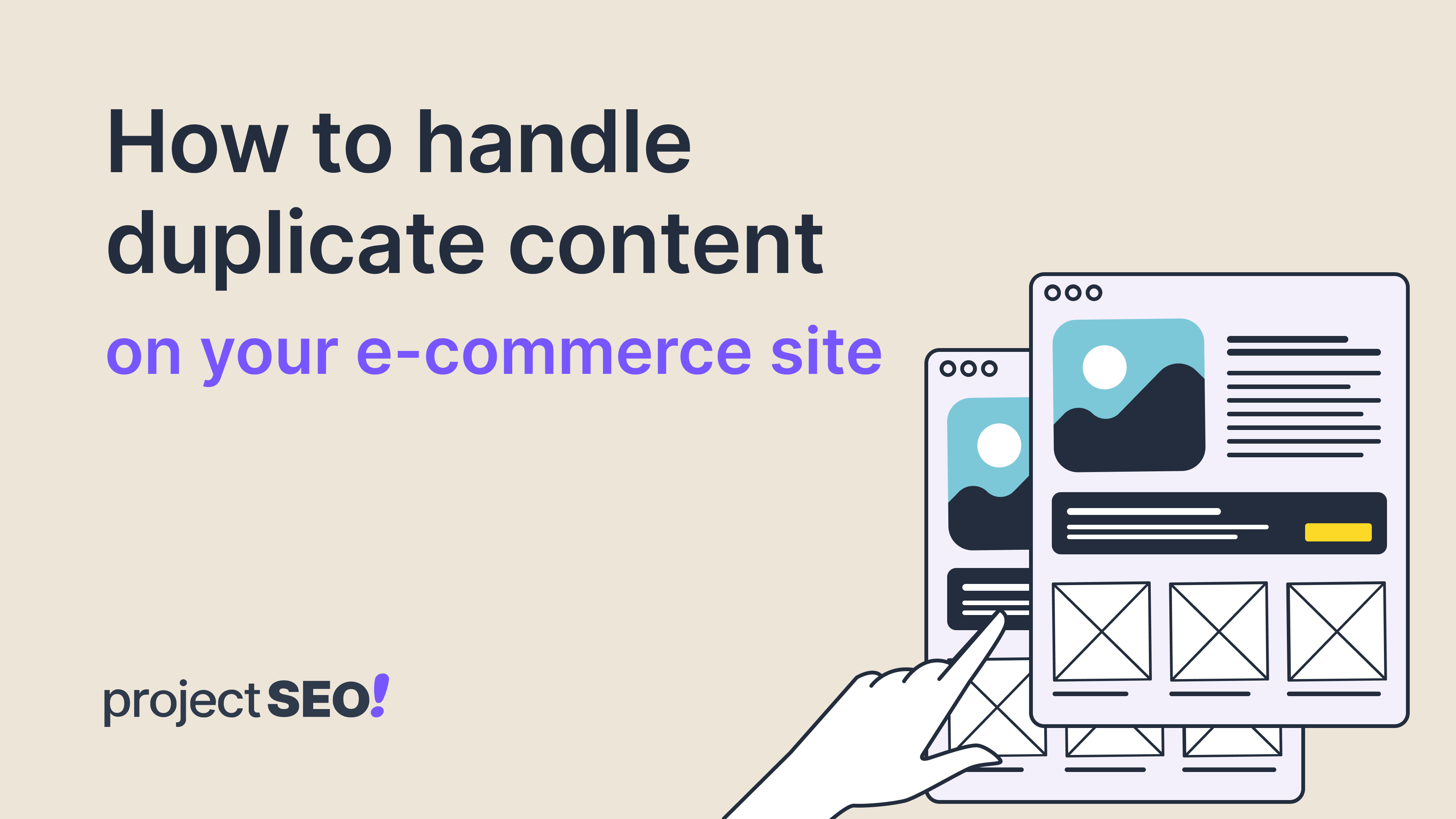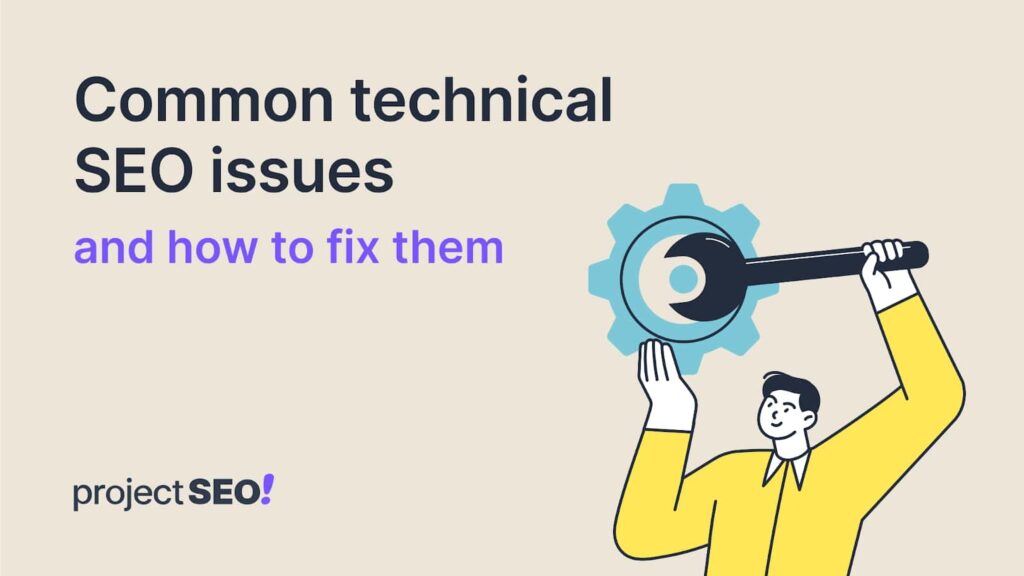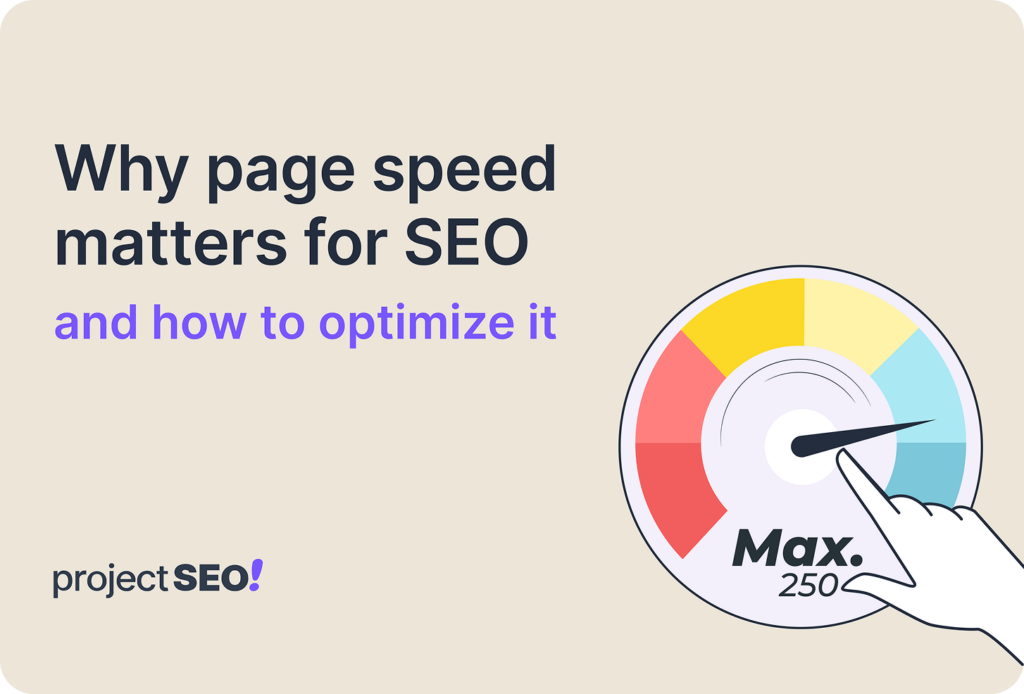Duplicate content can be a tricky problem for e-commerce sites, especially with product pages, filets, and categories. It can confuse search engines and affect your rankings. In this guide, we’ll show you how to identify and fix duplicate content issues to keep your site performing at its best. We’ll cover practical solutions to help you maintain strong SEO and ensure your content stands out.
What is Duplicate Content?
Duplicate content happens when the exact text or information appears in more than one online place. This can confuse search engines like Google, making it hard for them to decide which version is the most important. As a result, your site might rank better on search result pages.
This is a common issue in e-commerce. For example, if you sell the same gear in different colors but each product page has the same description, search engines find it hard to tell them apart. This can lead to lower visibility in search results, meaning potential customers might not see you as quickly.
Here are a few examples:
- Identical product descriptions: If you sell a jacket in red, blue, and green, and every product page uses the same description, Google sees these as duplicates. As a result, none of the pages may rank well.
- Copying content from other sites: If you use a manufacturer’s product description word-for-word on your site, and that exact text is already on other websites, search engines won’t know which version to prioritize, and your page might not rank.
- Multiple URLs for the same page: Sometimes, a page on your site can be accessed by different URLs, like with or without tracking parameters (?source=ad). This creates duplicate pages in search engines’ eyes, leading to ranking issues.
How Does Duplicate Content Impact SEO?
Duplicate content can cause problems when it comes to SEO. Search engines like Google get confused when they see the same content that appears in multiple places, which can lead to several issues. Let’s break down exactly how much duplicate content can hurt your SEO:
It Can Hurt Your Rankings
When search engines spot duplicate content, they don’t know which version to prioritize. This means none of the pages may rank as high as they could. So you’re competing with yourself instead of competing with other websites. The result is that your site’s visibility goes down, and you miss out on organic traffic.
It Can Distribute Backlinks Unnecessarily
Backlinks are like votes of confidence for your website, helping to boost your rankings. But when you have duplicate content, those valuable backlinks can get split between different versions of the same content. Instead of building authority for one strong page, you’re spreading it thin, weakening your SEO.
It Can Hurt Your Site’s Crawlability
Search engines use a “crawl budget” to explore and index the pages on your website. When they come across duplicate content, they waste that budget on unnecessary pages instead of focusing on your unique and important ones. This can slow down how quickly your good content gets indexed.
It Confuses the Search Engine
Imagine being a search engine and finding two (or more) pages with the same content—how do you decide which one is the best? This confusion can cause search engines to rank both pages lower or skip one altogether. When search engines are confused, your SEO takes a hit.
How to Avoid Duplicate Content
Avoiding duplicate content is vital to keeping your SEO in good shape. When search engines see the same content across multiple pages, it can confuse them and hurt your rankings. Fortunately, there are simple ways to fix and prevent duplicate content issues. Let’s look at the practical methods:
Use 301 Redirects
A 301 redirect permanently moves visitors and search engines from one page to another. By pointing everything to a single page, duplicate content is quickly dealt with, preventing confusion. The process for setting up a 301 redirect can vary depending on your platform. Since many e-commerce sites run on Shopify, let’s look at how to set up a 301 redirect there.
How to Set Up a 301 Redirect in Shopify:
Shopify makes it easy to set up redirects. Here’s a quick guide:
1. Go to Your Shopify Admin Panel
Log into your Shopify account and navigate to the admin panel.
2. Click on Online Store
On the left-hand side, go to Sales Channel, click Online Store, and then select Navigation.
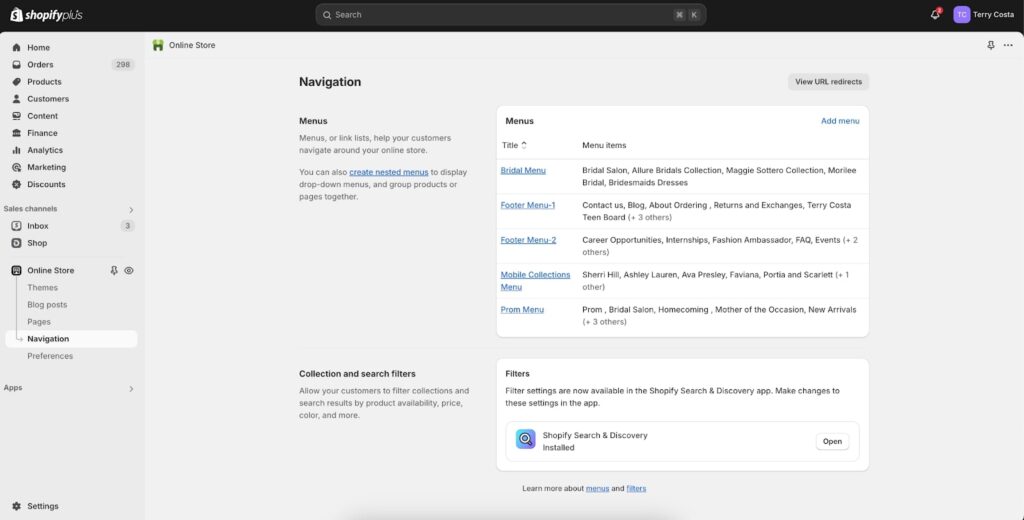
3. Find URL Redirects
Find and click View URL Redirects.
4. Create a New Redirect
Click on Create URL Redirect and fill in the two fields:
- Old URL: Enter the URL of the page you want to redirect.
- New URL: Enter the page URL you want visitors to visit.

5. Save
Once you’ve filled in the details, click Save Redirect.
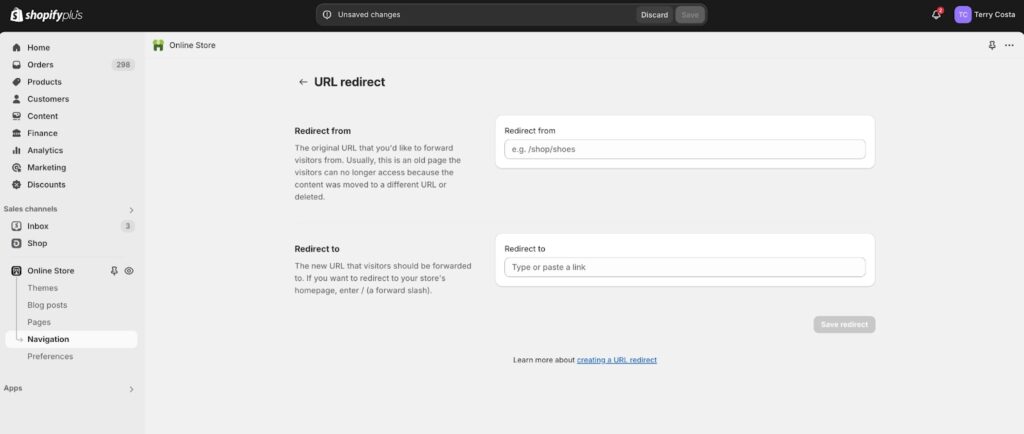
Now, any visitor or search engine trying to visit the old page will automatically be sent to the new one. Shopify handles the rest in the background, making it easy.
To Edit a 301 Redirect in Shopify
1. Follow steps 1 to 3 of “How to Set Up a 301 Redirect in Shopify“.
2. Find the Redirect to Edit
Look for the redirect you want to edit in the list. If you have a lot of redirects, you can use the search bar.
3. Edit the Redirect
Click on the redirect you want to change. The old and new URL fields will be the same as those you filled in when you created the redirect. Update the URLs as needed.
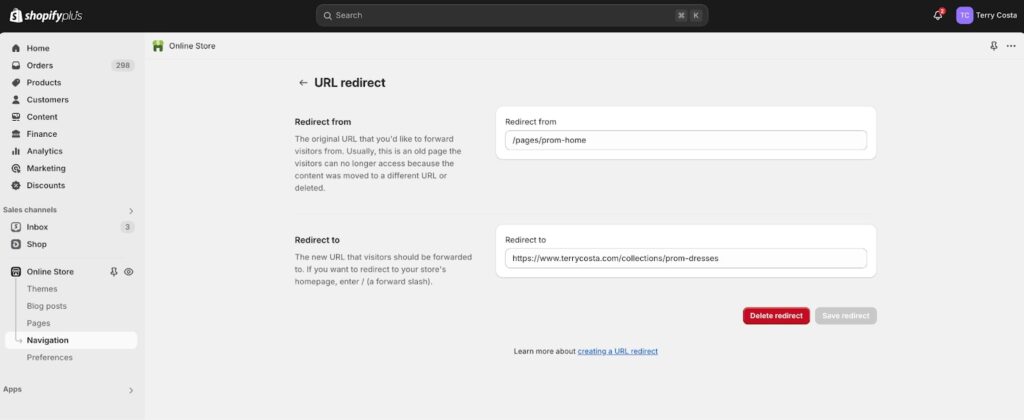
4. Save Your Changes
After editing, click Save Redirect to apply changes
To Delete a 301 Redirect in Shopify
1. Follow steps 1 to 3 of “How to Set Up a 301 Redirect in Shopify“.
2. Delete the Redirect
Click on the redirect you want to remove. At the bottom of the page, you’ll see the Delete Redirect button. Click it, and Shopify will remove the redirect from your site.
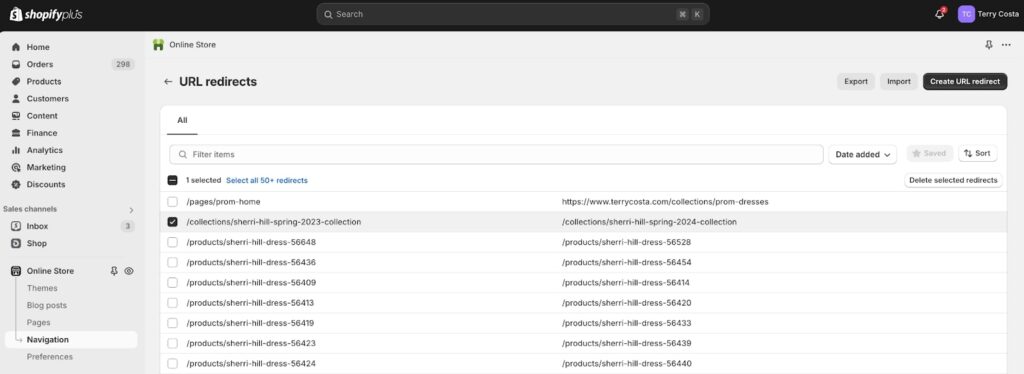
Organizing your redirects and updating or deleting them when necessary ensures that visitors and search engines are directed to the correct pages.
Canonical Tags
A canonical tag is a small piece of code that tells search engines which version of a page is the “main” one. This is especially useful if you have pages with similar content, like product variations.
Example:
If you sell a shirt in different colors, and each color has its page, you can add a canonical tag to each one like this:
<link rel=”canonical” href=”https://www.yoursite.com/main-product-page” />
This tells search engines to focus on the main product page and not rank all the variations separately.
Meta Robots Noindex
The meta robots noindex tag tells the search engine not to index a page. This is useful for pages that aren’t important for search result pages, such as duplicate product categories or filtered pages.
How to Use It:
Add this line to the <head> section of your HTML code:
<meta name=”robots” content=”noindex” />
This ensures the page won’t appear in search results, avoiding duplication issues.
Sitemaps
A sitemap is a guide that shows search engines all the essential pages on your site. Submitting a sitemap ensures that Google knows which pages to crawl and avoids any unnecessary duplicates.
How to Create a Sitemap:
- Use a tool like RankMath or an XML sitemap generator to create one.
- Submit your sitemap through Google Search Console. This will help search engines understand which pages to focus on.
Other Ways to Prevent Duplicate Content
- Content syndication: If republishing content across different platforms, use a canonical tag to link back to the original page.
- Consolidating pages: Merge similar pages into one, mainly if they cover the same topic.
- Internal linking: Make sure you have internal links pointing to the original page to help search engines navigate your site effectively.
- Write unique content: Avoid copy-pasting. Write original content for each page, even if it’s just slight variations for product descriptions.
- Report duplicate content: If your content is copied elsewhere, file a DMCA request with Google to remove it.
Following these steps, you’ll help search engines index the right pages and keep your SEO strong.
What can ProjectSEO do for you?
At ProjectSEO, we help you solve duplicate content issues on your e-commerce site, protecting your rankings and avoiding penalties. Managing duplicate content can be tricky; if done wrong, it can confuse search engines and hurt your SEO.
Our team will analyze your site and use effective strategies to find and fix duplicate content issues. This will make your site cleaner, more accessible for Google to understand, and more likely to rank higher in search engine results. Why wait? Book a free consultation with ProjectSEO today, and let’s optimize your e-commerce site for better SEO.
